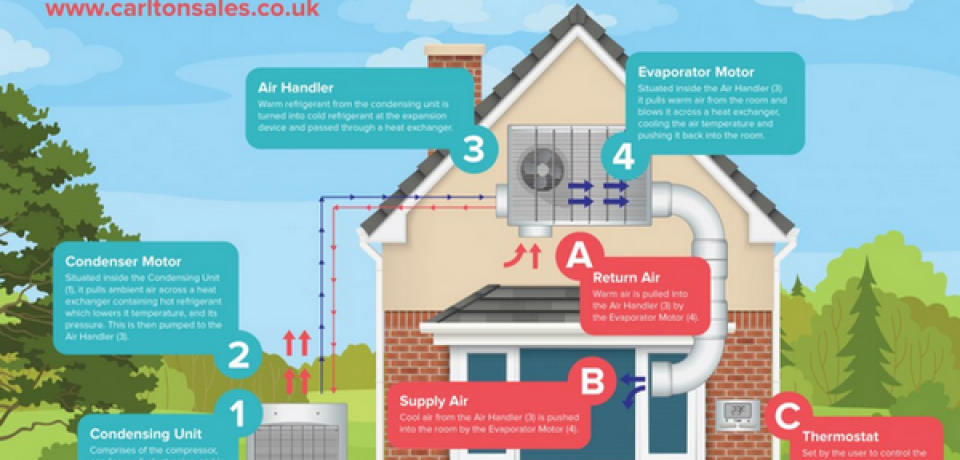Making Best Use Of Convenience And Cost Savings - Tips For Optimizing Your Heatpump Efficiency
Making Best Use Of Convenience And Cost Savings - Tips For Optimizing Your Heatpump Efficiency
Blog Article
Material By-MacKay Daniels
Whether you have a heat pump or have an existing central heating boiler back up, there are a few points that can be done to optimize your system for effective procedure. By complying with these suggestions, you can optimize convenience and savings without stressing your system or racking up energy bills.
Readjusting your thermostat for efficiency is one of the initial steps. Making use of zoning capabilities to restrict home heating of empty spaces is another reliable approach.
1. Establish Your Thermostat to the Right Temperature level
As the seasons alter, balancing convenience and price efficiency can be a challenge. Luckily, a couple of straightforward tips can help you decrease energy intake and make best use of cost savings.
Beginning by identifying the most effective temperature for your family members, then set your thermostat accordingly. Avoid making large raise and down in the temperature level setup, as this will trigger your heat pump to cycle on and off a lot more often, consuming much more energy.
Rather, slowly lower the temperature at night for a much more comfy sleeping environment. After that, elevate it a little in the morning. Bear in mind to keep air vents open and directed downward when heating, and up when cooling down to maximize flow.
2. Examine Your System Regularly
A heatpump system calls for marginal maintenance, but it is very important to examine the device frequently to capture any troubles before they become extreme. Clean interior filters on a timetable set by the manufacturer or when they're noticeably unclean, and make sure outdoor devices contend the very least 2 feet of clearance to permit airflow.
Checking the unit will certainly additionally consist of cleansing, tightening electrical terminals, and running performance tests to make sure precision throughout home heating and cooling settings. Suggested Resource site 's advised to have an expert solution the heatpump two times a year. Executing these regular solutions can maximize energy financial savings and prolong the life of the device.
3. Clear Snow and Ice Around the System
Heat pumps are made to run outdoors and need to be free of snow and ice in order to circulate air. If your heat pump is blocked by snow and can't draw in air, it will certainly toggle in between cooling and heating and may strain.
It is necessary to remove a two-foot clearance around your outdoor device in order to improve airflow and stop ice buildup. Heatpump typically go into a defrost setting in the winter months to thaw ice and snow yet this process can be problematic if your device is obstructed by way too much snow. This will certainly minimize your energy effectiveness and cause pricey repair service expenses in the future.
4. Inspect the Refrigerant Degrees
A heat pump makes use of refrigerant to cool your home in summer and warm it in wintertime. You can assist optimize its efficiency by on a regular basis checking the refrigerant degrees.
https://alabamanewscenter.com/2022/05/06/seven-energy-saving-tips-for-a-fickle-alabama-spring/ takes extra energy to alter the temperature of your heat pump from a comfy setting to a colder one than it does to preserve that temperature. Changing the temperature for short periods of time can also squander power.
Dripping ducts and dirty air filters can bring about uneven temperature levels. They can additionally make your heatpump much less reliable and cost even more to run. A professional can find and repair these issues to boost your heat pump's efficiency.
5. Optimize Your Zoning Capabilities
Using the zoning capabilities of a heatpump can aid to reduce power waste by warming only occupied areas. This not only decreases energy intake but also decreases operating costs and prolongs the life of the system.
The Build Balanced Zones device makes use of a genetic formula to develop areas that satisfy needed zone structure requirements. These requirements include equivalent area, compactness, and equal variety of features.
In addition, by utilizing smart thermostat technology to optimize the temperature level settings based upon occupancy patterns and organizing, you can additionally boost your heat pump's performance. Preserving a tidy air filter, making sure correct insulation and having your ductwork reviewed for efficiency can all contribute to improved power savings also.
6. Shielding the Outdoor Device
House owners frequently ask whether it's worthwhile to plant shade trees near their exterior a/c (AIR CONDITIONER) unit. The answer is typically yes, as shielding the AC system can help in reducing heat from the sun, which subsequently aids it cool down more efficiently.
However, it is very important to note that shading the air conditioner system doesn't necessarily reduce energy consumption. As described in the Conversation area of the FSEC record, the temperature of the bordering air has a bigger impact on cooling down performance than does the volume of air pulled in by the a/c unit.
If your air conditioning compressor is on the south side of your house, think about planting tall, deciduous trees with large, vast covers. These can give adequate color within one year.